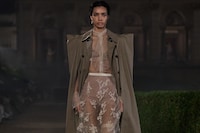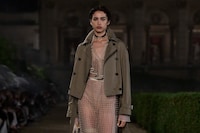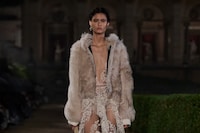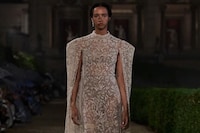Maria Grazia Chiuri brought Dior home – to her home, and her home means Rome. She last staged a show here a decade ago, while working as co-creative director of the house of Valentino with Pierpaolo Piccioli (newly ensconced at Balenciaga). But this was the first time, ever, she brought her Dior show here – and it meant something.
In the day leading up to the show, a tour around her birthplace revealed, in retrospect, a trail of breadcrumbs to indicate the inspirations behind the collection. A visit to the artist Pietro Ruffo’s atelier was pretty straightforward – he’s been collaborating with Chiuri for a decade, and a wall of his studio was pinned with Dior scarves he’d helped design, as well as sketches of his spidery toile de jouy grotesques. But you’d never guess, when we saw pieces from films by Luchino Visconti (Death in Venice, The Leopard) of Federico Fellini (Casanova) in situ at the storied Roman costume house Tirelli, that Chiuri would have had them painstakingly recreated, peopling her catwalk with ghosts of Cinecittà past before her show. Nor that, in visiting Chiuri’s passion project, the newly renovated Teatro della Cometa, we would be introduced to the history of its founder, the early 20th-century Italian aristocrat Mimi Pecci Blunt, whose influence on Chiuri’s collection proved formative. She was the reason the audience was asked to wear white, in homage to her ‘Bal Blanc’ of 1930, thrown in collaboration with Man Ray. Pecci Blunt was also a gallerist in the 1930s, “Like Monsieur Dior,” Chiuri said. “I was shocked how many artists they had in common.” The synergies were too striking to ignore.
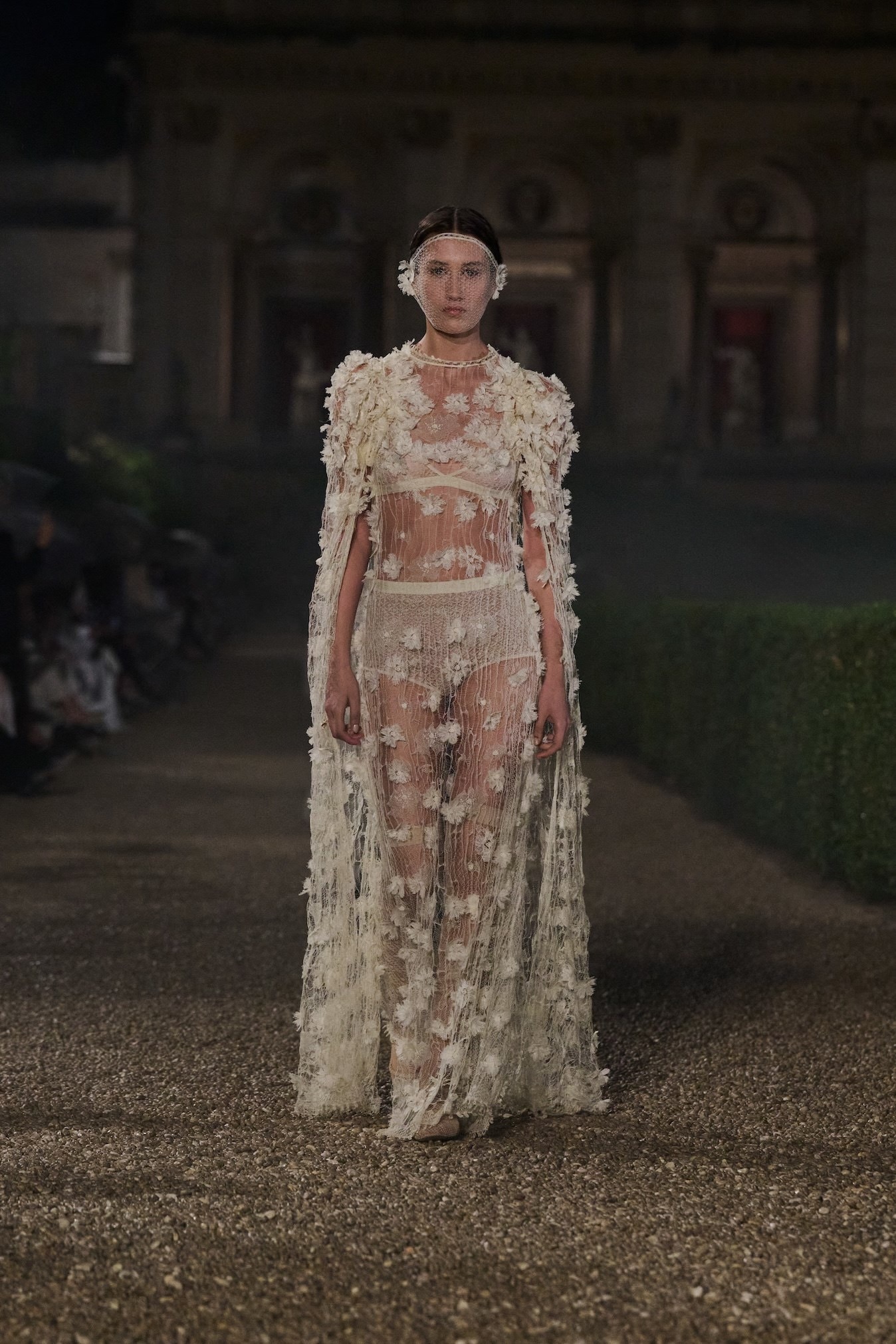
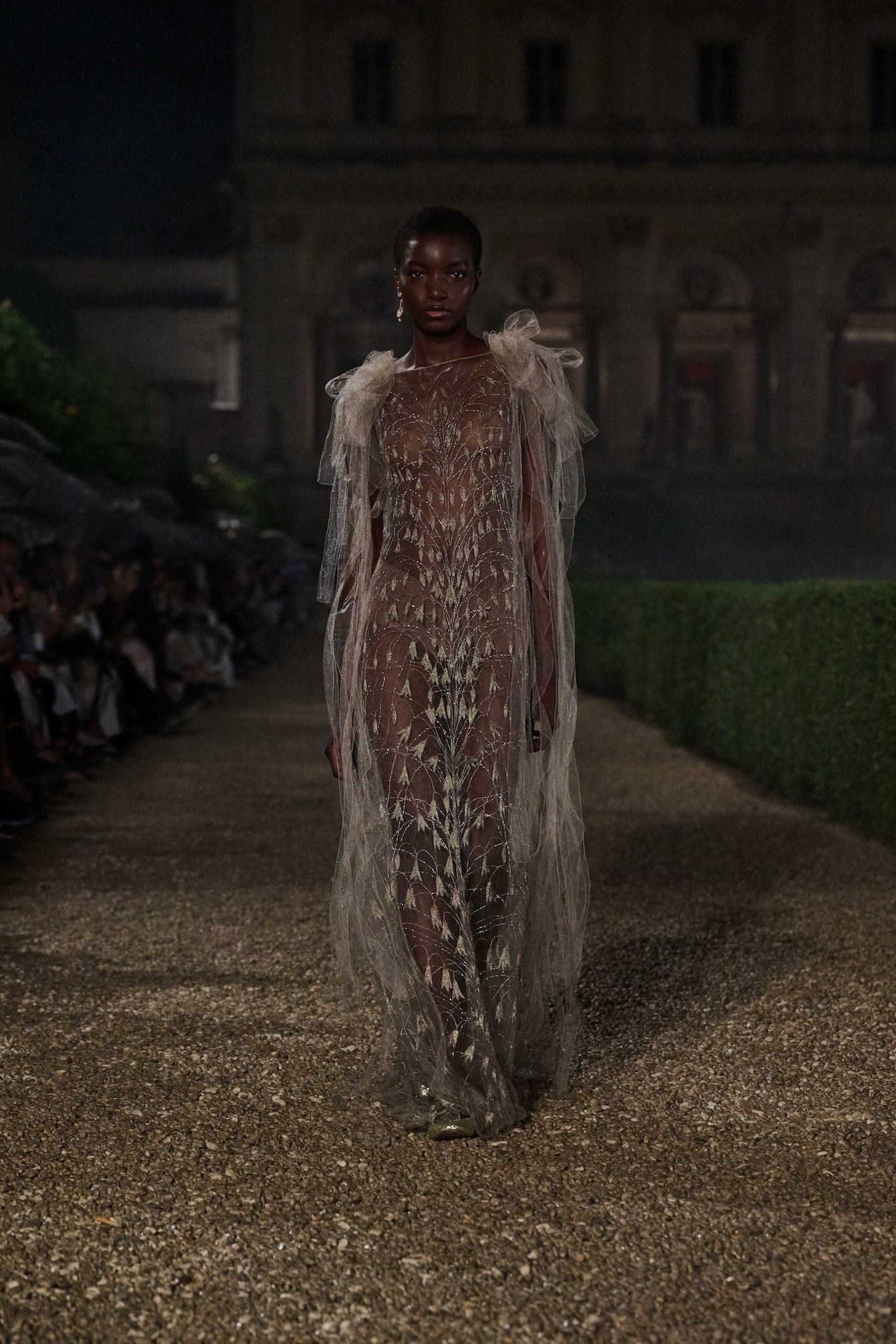
It wasn’t a show all about Mimi, however – it was all about very many things. Like Rome itself, it was complex and multilayered, different eras and influences cross-pollinating that meant, say, a cardinal’s scarlet-piped cassock may be preceded by a filmy, gossamer lace Belle Époque gown, or a sharply cut 18th-century gentleman’s frock-coat, or followed by a gladiatorial beaded evening dress, like precious armour. Some of it was a ready-to-wear collection – as cruise shows usually are – but almost half was haute couture, in an exceptional collaboration between these different and distinct ateliers. It was kind of confusing as to which was which, and to which era the dresses were nodding – pre-AD vestal virgins, or 60s flower children? But that was also the point – one reference was La bella confusione, Francesco Piccolo’s novel charting the golden age of Italian cinema through the rivalry of Visconti and Fellini. “Bella confusion – like Roma,” said Chiuri.
Speaking of her cruise shows in the wider scope of her time at Dior, Chiuri said, “What is important for me is to discover new things. When we go to Mexico, we discover craft, the textiles; in India, the embroidery.” Here, however, it was about us, the audience, discovering something new – the Rome Chiuri knows inside out. She staged the show in the gardens of the Villa Albani Torlonia, an 18th-century, art-crammed private home that, basically, visitors are never allowed into. Pawing through Tirelli’s archives and examining original Visconti costumes was a heady high. And another journey was into the very bowels of Rome, through the remnants of Emperor Nero’s villa, spanning 80 acres (yep, you read that right) and decorated with fragments of frescos that inspired Michelangelo and Raphael. Casanova and Marquis de Sade scratched their own graffitos into the walls: even history, it seems, is not always respectful of history. Although that could never be levelled at Chiuri – couture or ready-to-wear, this was a collection in the finest Dior tradition of breathtaking technique and feminine beauty.
For all the complexity and confusion, the message of this show was clear – it was a love letter to Rome, rich and emotionally resonant. When asked, backstage, why she decided to show this collection in Rome, Chiuri pragmatically talked about a shared language and ease of travel from Paris. Perhaps that’s because there was no confusion about her passion for Rome – which seemed truly infectious, given the standing ovation she received at the finale. These clothes vibrated with her love for her home, and showcased the very best of all she has created during her almost-decade at the helm of Dior.

